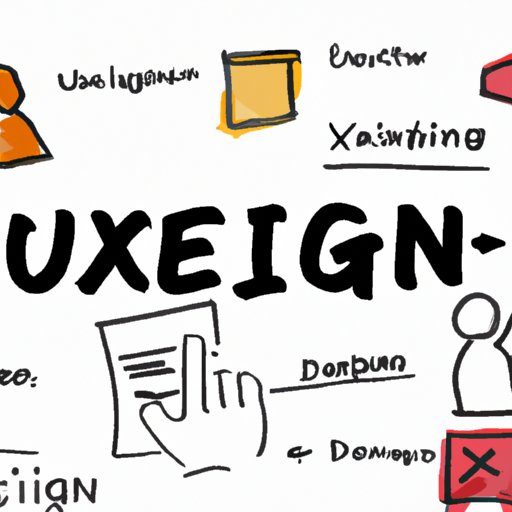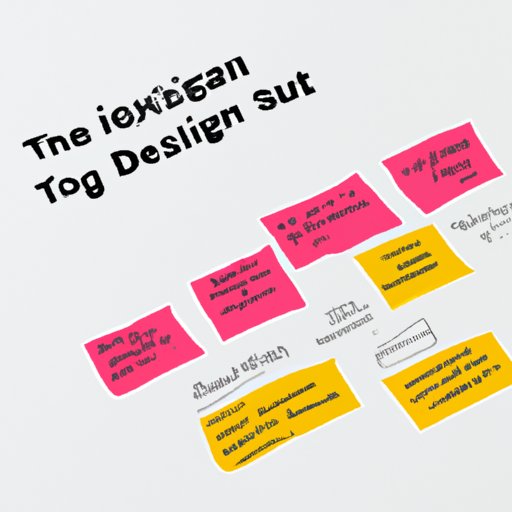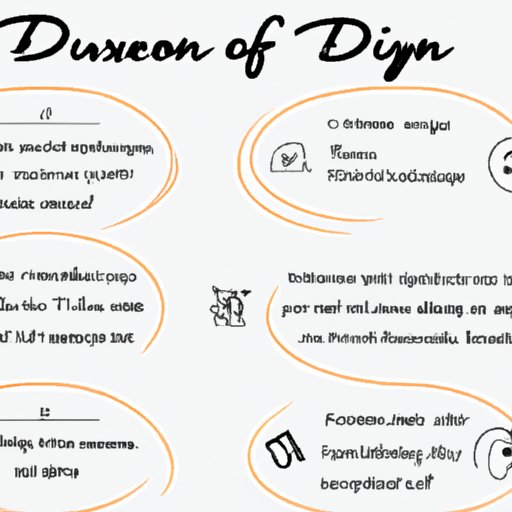Introduction
User experience (UX) has become an increasingly important concept in the world of technology. But what does UX actually mean? Put simply, UX is a term that refers to the overall experience of users when they interact with a product or service. From websites and mobile applications to voice assistants and IoT devices, UX is a critical factor for the success of any technology product.
This article is designed to explore what UX means in technology in greater depth. We’ll look at the different types of UX, the role it plays in technological development, and the benefits of incorporating UX into technology products. We’ll also discuss how to leverage UX for maximum impact.
An Overview of UX in Technology: What Does it Mean?
To understand what UX means in technology, we first need to look at what UX is. According to the Interaction Design Foundation, “User experience (UX) refers to a person’s emotions and attitudes about using a particular product, system or service. It includes the practical, experiential, affective, meaningful and valuable aspects of human–computer interaction and product ownership.”
In other words, UX is all about creating an enjoyable, intuitive, and satisfying experience for users. It encompasses the entire process of interacting with a product or service, from the design of the interface to the user’s overall satisfaction with the experience.
There are several types of UX, including visual, auditory, haptic, and cognitive. Visual UX focuses on the visual elements of a product, such as its layout, color scheme, typography, and icons. Auditory UX focuses on sound, including music, voiceover, and sound effects. Haptic UX deals with physical sensations, such as vibrations and pressure. Finally, cognitive UX focuses on how a product is used and how users think about it.

Exploring the Role of UX in Technology
UX plays an essential role in the development of technology products. According to a study by Adobe, “86% of consumers say they are willing to pay more for a better customer experience.” This demonstrates that UX is not just a nice-to-have; it’s a must-have for any successful tech product.
The benefits of UX in technology are numerous. For one, it can help improve efficiency by streamlining processes, reducing errors, and making tasks easier to complete. It can also increase engagement by providing a more immersive and enjoyable experience for users. And finally, it can enhance user experience by providing a more intuitive and satisfying user journey.

A Deep Dive into UX and its Impact on Technology
Now that we’ve established the importance of UX in technology, let’s take a deeper dive into some of the ways UX influences the development of tech products.
One of the most obvious ways UX impacts technology is through user interface (UI). UI is the part of a product that users interact with, and it’s heavily influenced by UX. A good UI should be intuitive and easy to use, while a bad UI can lead to frustration and confusion. By focusing on UX, developers can ensure that their UI is optimized for the best possible user experience.
Data visualization is another area where UX plays a major role. The way data is presented can have a huge impact on how users perceive and interact with it. By designing visuals with UX in mind, developers can create data visualizations that are easier to understand and more engaging for users.
Finally, UX is also having an increasing impact on artificial intelligence (AI). As AI becomes more and more advanced, it’s becoming increasingly important that developers incorporate UX into their designs. This will ensure that users are comfortable and confident when interacting with AI-powered products.

The Benefits of UX in Technology
We’ve already discussed some of the benefits of UX in technology, but let’s take a closer look at how incorporating UX into tech products can lead to improved performance and enhanced user experience.
One of the main benefits of UX is improved efficiency. By optimizing processes and reducing errors, UX can help make products faster and more efficient. This can lead to cost savings, increased productivity, and improved user satisfaction.
Increased engagement is another key benefit of UX. By creating an enjoyable and immersive experience, UX can help keep users engaged with a product and encourage them to come back again and again. This can lead to higher customer loyalty and increased revenue.
Finally, UX can also enhance user experience. A good UX design can make a product easier to use and more satisfying for users. This can lead to increased customer satisfaction, which is critical for any technology product.
How to Leverage UX for Maximum Technological Impact
Now that we’ve explored the benefits of UX in technology, let’s look at how to leverage UX for maximum impact.
The first step is to define your goals. What do you want to achieve with your product? Are you looking to increase efficiency? Enhance user experience? Increase engagement? Once you’ve identified your goals, you can begin to develop a UX strategy that will help you reach them.
Next, it’s important to understand the UX design process. This involves researching your target audience, understanding their needs, developing wireframes and prototypes, testing and refining the design, and measuring the results. This process should be repeated regularly to ensure that your product remains up-to-date and optimized for users.
Developing the right tools is also key. This includes things like analytics tools, usability testing tools, and prototyping tools. These can help you measure and optimize the user experience of your product.
Finally, it’s important to test, analyze, and improve. Regularly testing and analyzing your product will help you identify areas for improvement and ensure that your UX design is meeting user needs.
Conclusion
In conclusion, UX is a critical factor for the success of any technology product. It encompasses the entire process of interacting with a product or service, from the design of the interface to the user’s overall satisfaction with the experience. UX can help improve efficiency, increase engagement, and enhance user experience, leading to greater success for tech products.
By understanding the role of UX in technology and leveraging it for maximum impact, developers can ensure that their products are optimized for the best possible user experience.
Final Thoughts
It’s clear that UX is a crucial element of any successful tech product. By incorporating UX into the development process, developers can ensure that their products are optimized for users and provide a more enjoyable and satisfying experience.
(Note: Is this article not meeting your expectations? Do you have knowledge or insights to share? Unlock new opportunities and expand your reach by joining our authors team. Click Registration to join us and share your expertise with our readers.)
